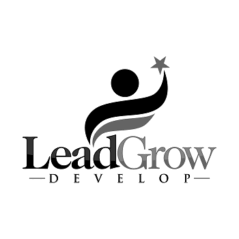Every great company runs on relationships—connections with consumers, open lines of communication, and consistent delivery of services. Dealing with all these interactions without a planned system results in scattered knowledge and missed opportunities. That is where strong digital tools take the front stage. Businesses gain more than just organization when they have the correct system in place; they can also personalize engagement, increase retention, and use smart decision-making to propel long-term expansion. It’s about releasing the full potential of client interactions, not only about monitoring statistics.
Centralizing Customer Data to Eliminate Fragmentation and Disorganization
In any business, disorganized contact lists, inconsistent documentation, and lost communication threads lead to chaos. Efficiency declines, response times lag, and tailored service almost become impossible without a central hub for storing and managing client data. A well-organized system lets your staff rapidly access interaction data, preferences, and purchasing behavior from one easily accessible location. Consolidated data helps one depend less on recollection or manual searches. Every exchange, purchase, and update is logged in real time in every interaction. Because of the smooth transitions between team members made possible by this structure, clients never have to repeat themselves. It guarantees precision, consistency, and a better degree of professionalism in every interaction.
Streamlining Sales Pipelines to Convert Leads into Long-term Customers
Sales success calls for timing, communication, and follow-through. Promising opportunities are lost in the shuffle and lead fall between the cracks in an unstructured pipeline. From the initial inquiry to long-term loyalty, a customer relationship management system maps the whole journey. With e-commerce CRM systems, every stage is tracked; every follow-up is planned; every deal moves forward depending on accurate data and aggressive action. As a result of this clarity, your sales team becomes more accountable. Full visibility of pipeline development allows you to spot bottlenecks, raise conversion rates, and streamline plans for every level. Automated reminders guarantee regular follow-up; progress indicators show which initiatives produce the best return. As a result, your staff performs more effectively, gets more attention, and captures possible income instead of wasting it.
Enhancing Marketing Campaigns with Targeted and Data-Driven Approaches
Marketing without data is like aiming blindly. You must speak directly to the demands and behaviors of your audience if you are to design campaigns that connect—more than just a message. Your system will be able to provide unique messaging that lands precisely where it should when it combines consumer insights with campaign planning. When every customer profile includes thorough purchasing behavior, preferences, and interaction patterns, segmentation becomes simple. Instead of presumptions, campaigns might be based on user behavior. Data guides your decisions, whether you are starting an email series, running a limited-time offer, or contacting lapsed clients. Your system will help you to lower waste, boost return on investment, and strengthen relationships with every message when it supports these initiatives.
Improving Team Collaboration Through Shared Access and Defined Processes
Any developing company will clearly see the difference that alignment across departments makes. Collaboration deteriorates, and important information is lost when customer service, marketing, and sales are run independently. By allowing every department access to the same real-time data, a consolidated platform promotes openness and teamwork. Shared visibility enhances communication and helps to stop duplicate or contradicting outreach. Clearly defined processes guarantee that everyone understands when action is needed, who owns which chore, and what comes next. This organization accelerates turnaround times and reduces uncertainty. Team members operate within the same ecosystem, whether managing a service request or closing a transaction, therefore improving consistency and the customer experience. Your team stays aligned and efficient instead of spreading out work or chasing updates.
Adapting Systems to Fit Unique Business Needs for Long-Term Scalability
When your company follows particular procedures or has growth targets, off-the-shelf tools can fall short. Generic systems compel you to compromise, which results in ineffective workarounds slowing down development. Your solution should fit your operations, not the other way around, if you are to get the full benefit. This is where custom CRM development services can provide a strategic advantage. Using a customized system, you get tools and procedures meant for your team structure, customer path, and goals. Long-term scalability without additional overhead is made possible by integration with current technologies, dashboards developed for your KPIs, and automations matching your processes. Your system changes with your company without the restrictions of rigid templates. This adaptability future-proofs your business and helps to position it to expand uninterruptedly without technical debt.
Conclusion
Smart companies embrace technology that simplifies, customizes, and streamlines every customer interaction, so transcending spreadsheets and antiquated contact lists. Starting with a well-designed CRM at the core of your business, you gain clarity, efficiency, and the ability to transform every lead into a long-standing connection. It’s not only about managing contacts; it’s about laying a foundation that enables expansion, improves service, and keeps your business connected in a meaningful way.

